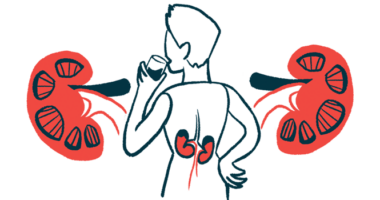mRNA treatment restores Gal A in Fabry-derived heart cells
Study eyes potential of new therapy option for Fabry disease

Messenger RNA (mRNA) treatment restored levels of Gal A enzyme activity in heart cells derived from two Fabry disease patients with severe heart involvement, a study showed.
The mRNA therapeutic delivered the correct information contained in the GLA gene to produce a fully functional Gal A enzyme, which is deficient in people with Fabry.
These findings support the further clinical development of GLA mRNA as a treatment option for heart disease related to Fabry, the research team noted.
The cell-based study, “GLA-modified RNA treatment lowers GB3 levels in iPSC-derived cardiomyocytes from Fabry-affected individuals,” was published in the American Journal of Human Genetics.
Fabry disease is characterized by an inherited deficiency in the alpha-galactosidase A (Gal A) enzyme, which leads to the ineffective breakdown of a fatty substance called globotriaosylceramide (Gb3).
As a result, Gb3 builds up to toxic levels inside the cell’s recycling centers, called lysosomes. Eventually, this causes damage to various organs and tissues, particularly the kidneys, heart, skin, and nervous system.
Enzyme replacement is the standard treatment for Fabry, which provides a lab-made source of Gal A to help break down Gb3 and alleviate symptoms. Despite its benefits, some patients still develop kidney and heart disease or develop an immune response against that lab-made protein, thus lowering its efficacy. Also, its high cost limits widespread use.
Small molecule chaperone therapy is an alternative option, which can increase the activity of some abnormal versions of Gal A, but its use covers about half of Fabry patients.
Is mRNA a potential treatment option?
Therefore, new therapeutic approaches would benefit this population, noted the research group based at the University of Melbourne in Australia.
Encoding the correct information from the GLA gene into mRNA, and delivering it to cells where the Gal A enzyme can be made, is a potential alternative way of treating Fabry. mRNA is a molecule that carries genetic information from DNA to the cell’s protein-making machinery, helping create proteins essential for various cellular functions.
However, before it can be used as a treatment, therapeutic mRNA must be modified (modRNA) to avoid an inflammatory immune response to external mRNA, which cells detect as foreign.
Preclinical studies in mice and nonhuman primates have shown that systemic (bodywide) GLA modRNA treatment restored Gal A enzyme activity, which was sustained for more than three months after a single dose.
To investigate the potential of modRNA in a human model, the team generated heart muscle cells derived from a Fabry patient with very low levels of Gal A activity and kidney and severe heart involvement. Many features of Fabry were recapitulated in these cells, including the excess build-up of Gb3 in lysosomes.
Delivering GLA modRNA to these heart muscle cells, using lipid nanoparticles as a vector, increased the levels of Gal A enzyme, “demonstrating the efficiency of this method,” the team wrote.
Using two different detection methods, GLA modRNA treatment significantly reduced Gb3 levels and the number of GB3-positive lysosomes in patient-derived heart cells.
These findings were confirmed using heart cells derived from another individual with different Gal A defects underlying a severe classical form of Fabry disease.
Cell-wide protein analysis demonstrated a significant increase in Gal A, as expected. Among six proteins found elevated in lysosomes within these heart cells, three were significantly reduced with Gal A modRNA treatment.
Because not all proteins were reduced, the researchers suggested that this “might reflect the inability of modRNA-based enzyme-replacement therapies to fully rescue the pathophysiology of Fabry disease.” They noted that GB3 concentrations in treated Fabry heart muscle cells were not reduced to levels seen in healthy control cells.
“These results support further clinical development of GLA modRNA as a treatment modality for cardiac-related pathology in Fabry disease,” the researchers concluded.







